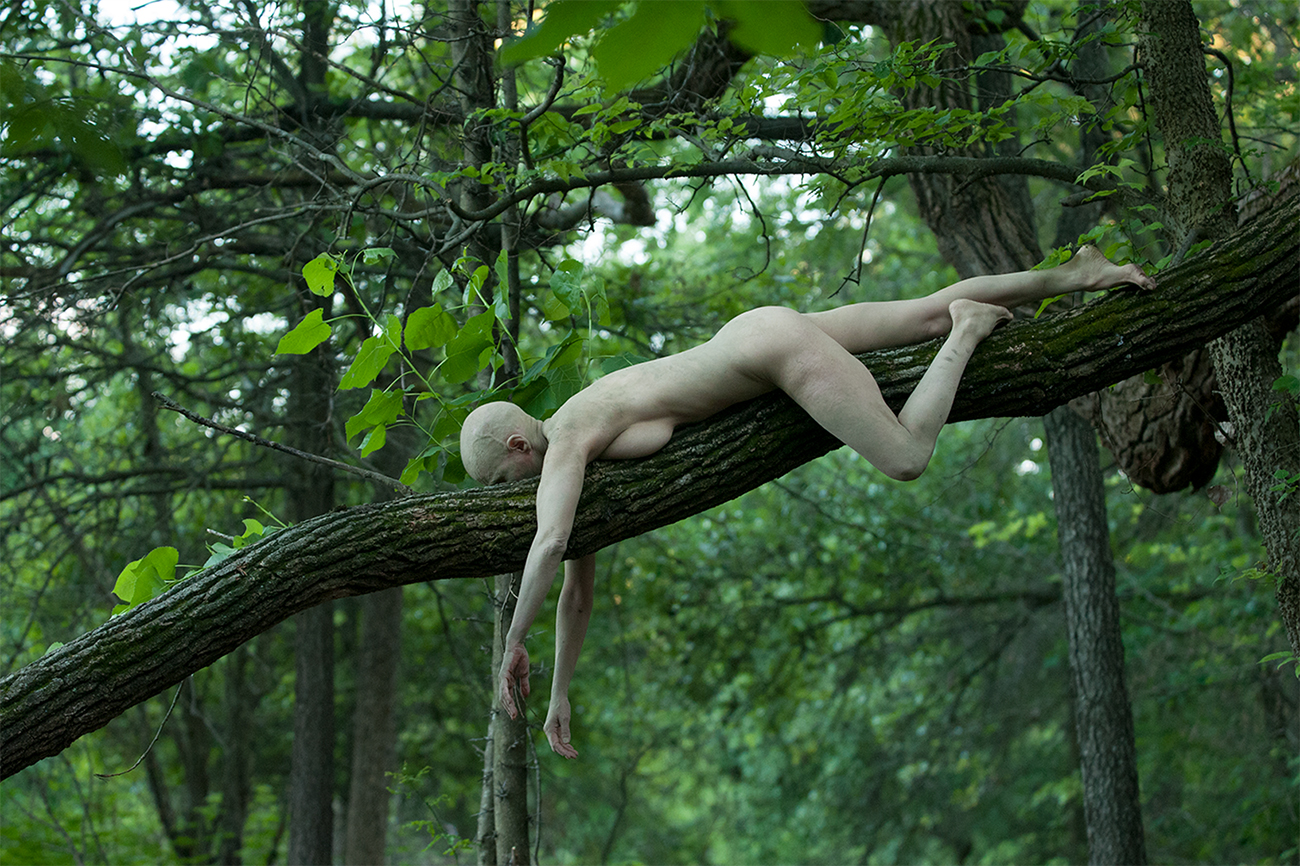About

I completed my MFA in the Intermedia &Video Art program at the University of Iowa in 1997, inspired to enroll there by the work of Cuban-born body artist, Ana Mendieta, who did her graduate studies at U of IA two decades prior. For over 30 years my artistic work has encompassed site-responsive environmental performance, sculpture, video art and dance. Many of the works have been created in wilderness, rural, built and cultivated landscapes in the U.S. and abroad. At the center of my practice is the natural world, physically and/or symbolically, and the presence of my body therein. My performances have taken place within and around sculptural installations I construct in-situ for events attended by live audiences or made exclusively for the camera in the environment as well as in traditional theatrical settings indoors. The site-specific works respond to elemental and geographical characteristics of place, involving material and resources related to, or drawn directly from the land, and conceptually and thematically rooted in regional historical and cultural traditions, legends and/or archeological findings.
A significant body of my work has been created in the boreal landscapes of Finland over a twenty-year period from 1998-2018. It was in Finland that I initiated a practice of glacially-slow minimalist performances for the camera in which my naked body was embedded in various landscapes – forest, tundra, a rocky island, a frozen lake, embodying the landscape and temporality in nature - often not perceptible in the moment in its gradual process, but as after-image. With all my maternal great-grandparents originating in Finland, these in-situ works created there invoked ancestral memories that felt physical, poetic and female. As Susan Best deconstructed the criticisms of Mendieta’s work as essentialist (2007), I too have considered my process as a “reciprocal insertion” in the land that any body may access and participate in. As the definition of eco-feminism evolved into the 21st century to be more comprehensive than any one trope of essentialism – to honor organic processes, and the wholistic connections to recognize all forms of life as sacred, necessitating global (and individual) healing, so have I oriented and identified my art practice.
With the advance of digital technologies over the years, my video-performance and installation work grew more mosaiced, utilizing masking, mirroring and other image-manipulation techniques in post-production to create layered and ‘picture-in-picture’ montages. These methods portray abstractions of my body and imagery from the natural world that may appear at once human, animal and vegetative, mimicking patterns in the environment and representing the stirring and stilling of time through an interplay of fixed and moving imagery.
The symbology and lyricism of mythology, classical and literary sources have broadly informed my art, as widely varied as the folkloric “rune-singing” poetic traditions of Karelian Finland (exemplified in the Finnish epic poem, the Kalevala) and the South Indian classical dance form of Bharatanatyam. Mythopoeic depictions of the natural world, earthly and cosmic origin stories and female figures of iconic significance in relation to those stories (narrative and/or purely metaphoric), have been particularly impactful in developing content for many of my works. As my art evolved over the decades, so has my definition and understanding of “goddess revisionism” - a second wave feminist movement that was influential early in my practice. Re-envisioning is a better phrase. In personifying a particular role, character or aspect of nature embodied, I am cognizant as a female performer, of that re-envisioning as a remaking of and calling attention to women’s bodies as sacred, generative forces for healing, agency and inter-relational empathy, human to human, human and earth.
My study and practice in classical Indian dance commenced in 2009 after many years of meditation, yoga and other movement practices, studying with Soorya Performing Arts, St. Louis, and Anjali Tata-Hudson in Kansas City. Over time, the dance form’s percussive and expressive vocabulary and dramaturgy transformed my improvisational performance methods. I absorbed and participated through the guru-shishya path as it exists in the U.S. diaspora, in the “ecology of the culture” of the dance. (Cherian, 2017). Deeply respectful of its traditions, I’ve perceived that culture as a living system that may morph and adapt. The powerful dance practice became a life force for me when I asked Anjali to continue mentoring me as I began treatment for hereditary breast cancer in early 2017.
In a disquieting prescience, my somatic work as a performance artist for 30 years inquiring into “liveness” through movement and kinesthesia (often in relationship with a natural environment, as well as to a camera lens) converged in a new investigation into unknown territory: my body, life, and art impacted by cancer. In 2017 when I posted images on social media of a photographic series shot in an apple orchard in the springtime with my bald head peering into a dark hole dug for a new tree planting, a friend and ovarian cancer survivor commented, “Every. Single. One. of us who has been with this disease is validated, loved and to a certain extent, freed by this image.”
“every.single.one” became the title for a theatrical solo performance that portrays personal, familial and community encounters with hereditary cancer, while exploring science, genetics, integrative oncology and healing from a cancer patient’s perspective. Weaving three tiers of testimonial – my own, my sister’s, and those of hereditary cancer survivors and previvors (people taking prophylactic measures to prevent cancer when they have a known genetic risk), every.single.one dramatizes universal human realities, the body as a site of uncertainty in illness, and sibling and community interrelationships. Turning the camera on myself in real time to document the cancer experience became therapeutic. Continuing to create art during cancer provided a means to process the life-altering ordeal to, in the words of Black feminist poet Audre Lorde, “examine it, put it into perspective, share it and make use of it.”
Cherie Sampson, 2025
(Above image: performance for camera in collaboration with photographer, Lisa Wigoda)